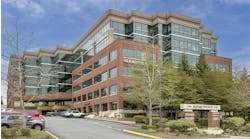LOS ANGELES — In an effort to quell the dumping of Chinese solar products and provide US manufacturers with a more level playing field, the US Department of Commerce (DOC) has imposed new punitive tariffs on Chinese solar product manufacturers. The DOC’s July 8 ruling calls for antidumping duties as high as 259.9% and countervailing duties as high as 23.3%.
The DOC’s ruling will have an immediate impact on solar panel buyers. Chinese imports represent a significant share of the US solar panel market. Market research firm IBISWorld estimates that imports as a whole make up more than three-quarters of domestic demand for solar panels, and China represents about 40.0% of that figure. China’s significant presence in the market has historically driven down the price of not only photovoltaic (PV) panels but also installation because panel prices are a major component of installation costs. According to EnergyTrend, a provider of renewable energy research, Chinese PV cell manufacturers exporting to the United States will see their costs instantly rise by an average of 10.0% due to the tariffs. As a result, US buyers will face higher prices for solar panel installation services in the short term.
The ruling caps a protracted and contentious trade dispute that began in 2012, when a prominent US solar company spurred the DOC to launch a formal investigation into the Chinese dumping of low-cost PV cells, a major solar panel component, into the US market. US suppliers complained that Chinese producers benefited unfairly from lower production costs as well as cash grants, discounted loans, free land and utilities and other government assistance. The investigation led the DOC to enforce tariffs on PV cells imported from China beginning in 2012; however, a loophole allowed duty-free imports to continue flooding US ports so long as certain components were manufactured in Taiwan. The DOC subsequently closed this loophole in 2014 by including any solar products assembled in China regardless of their manufacturing origin in the tariffs. The DOC’s July decision makes that ruling final and raises the tariff rates originally set in 2012.
While the new tariffs will create some short-term growth in the price of panel installation, the cost of adopting solar energy has nonetheless been plummeting during the past three years, and it is expected to continue falling heading into 2018. From 2012 to 2015, IBISWorld estimates that the average price of solar panel installation has been falling at an annualized rate of 12.1%. Installation costs are forecast to continue falling at an annualized rate of 9.1% in the three years to 2018.
The decline in installation prices has primarily resulted from the influx of imported PV cells into the market, and it will continue to do so in the next three years. As China takes a temporary backseat, other countries like Malaysia, Mexico and Taiwan will move in to capture a greater share of demand from the burgeoning US solar energy market. Furthermore, in anticipation of this ruling, Chinese manufacturers have already begun offshoring more of their production and assembly operations to zero- or non-tariff countries. As this capacity is expanded, IBISWorld expects solar cell imports from China to pick back up in 2016, providing buyers with a steady supply of low-cost PV cells and other solar energy equipment.
Although these tariffs may lead to some short-term growth in the cost of solar energy investments, buyers should consider scheduling projects now. This summer marks the last in which buyers can take advantage of the solar investment tax credit, which provides 30.0% of the cost of installing solar panels for systems placed in service before December 31, 2016. Beginning January 1, 2017, this tax credit will drop to 10.0%, so buyers should capitalize on the higher credit while they still can.


